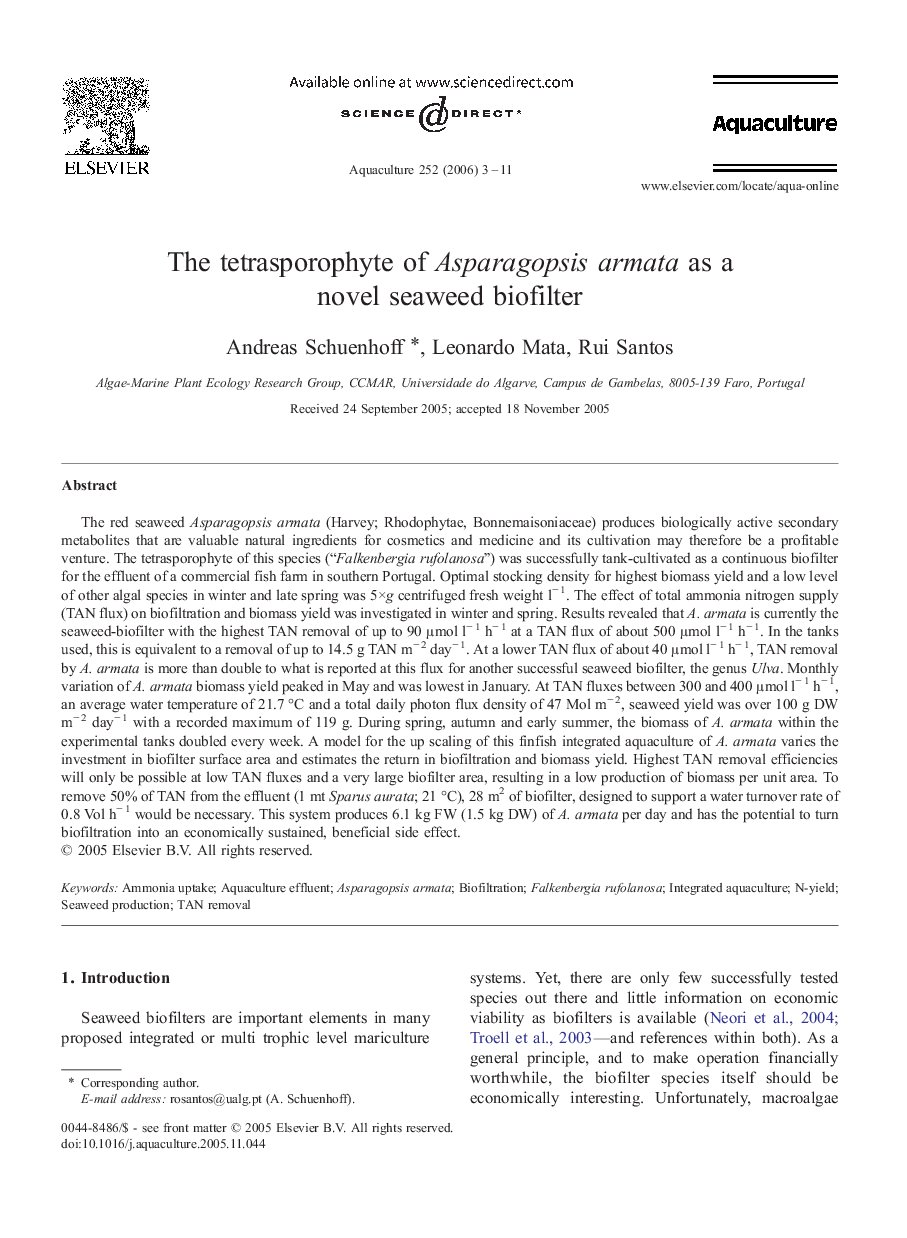| کد مقاله | کد نشریه | سال انتشار | مقاله انگلیسی | نسخه تمام متن |
|---|---|---|---|---|
| 2426287 | 1105358 | 2006 | 9 صفحه PDF | دانلود رایگان |

The red seaweed Asparagopsis armata (Harvey; Rhodophytae, Bonnemaisoniaceae) produces biologically active secondary metabolites that are valuable natural ingredients for cosmetics and medicine and its cultivation may therefore be a profitable venture. The tetrasporophyte of this species (“Falkenbergia rufolanosa”) was successfully tank-cultivated as a continuous biofilter for the effluent of a commercial fish farm in southern Portugal. Optimal stocking density for highest biomass yield and a low level of other algal species in winter and late spring was 5×g centrifuged fresh weight l− 1. The effect of total ammonia nitrogen supply (TAN flux) on biofiltration and biomass yield was investigated in winter and spring. Results revealed that A. armata is currently the seaweed-biofilter with the highest TAN removal of up to 90 μmol l− 1 h− 1 at a TAN flux of about 500 μmol l− 1 h− 1. In the tanks used, this is equivalent to a removal of up to 14.5 g TAN m− 2 day− 1. At a lower TAN flux of about 40 μmol l− 1 h− 1, TAN removal by A. armata is more than double to what is reported at this flux for another successful seaweed biofilter, the genus Ulva. Monthly variation of A. armata biomass yield peaked in May and was lowest in January. At TAN fluxes between 300 and 400 μmol l− 1 h− 1, an average water temperature of 21.7 °C and a total daily photon flux density of 47 Mol m− 2, seaweed yield was over 100 g DW m− 2 day− 1 with a recorded maximum of 119 g. During spring, autumn and early summer, the biomass of A. armata within the experimental tanks doubled every week. A model for the up scaling of this finfish integrated aquaculture of A. armata varies the investment in biofilter surface area and estimates the return in biofiltration and biomass yield. Highest TAN removal efficiencies will only be possible at low TAN fluxes and a very large biofilter area, resulting in a low production of biomass per unit area. To remove 50% of TAN from the effluent (1 mt Sparus aurata; 21 °C), 28 m2 of biofilter, designed to support a water turnover rate of 0.8 Vol h− 1 would be necessary. This system produces 6.1 kg FW (1.5 kg DW) of A. armata per day and has the potential to turn biofiltration into an economically sustained, beneficial side effect.
Journal: Aquaculture - Volume 252, Issue 1, 1 March 2006, Pages 3–11